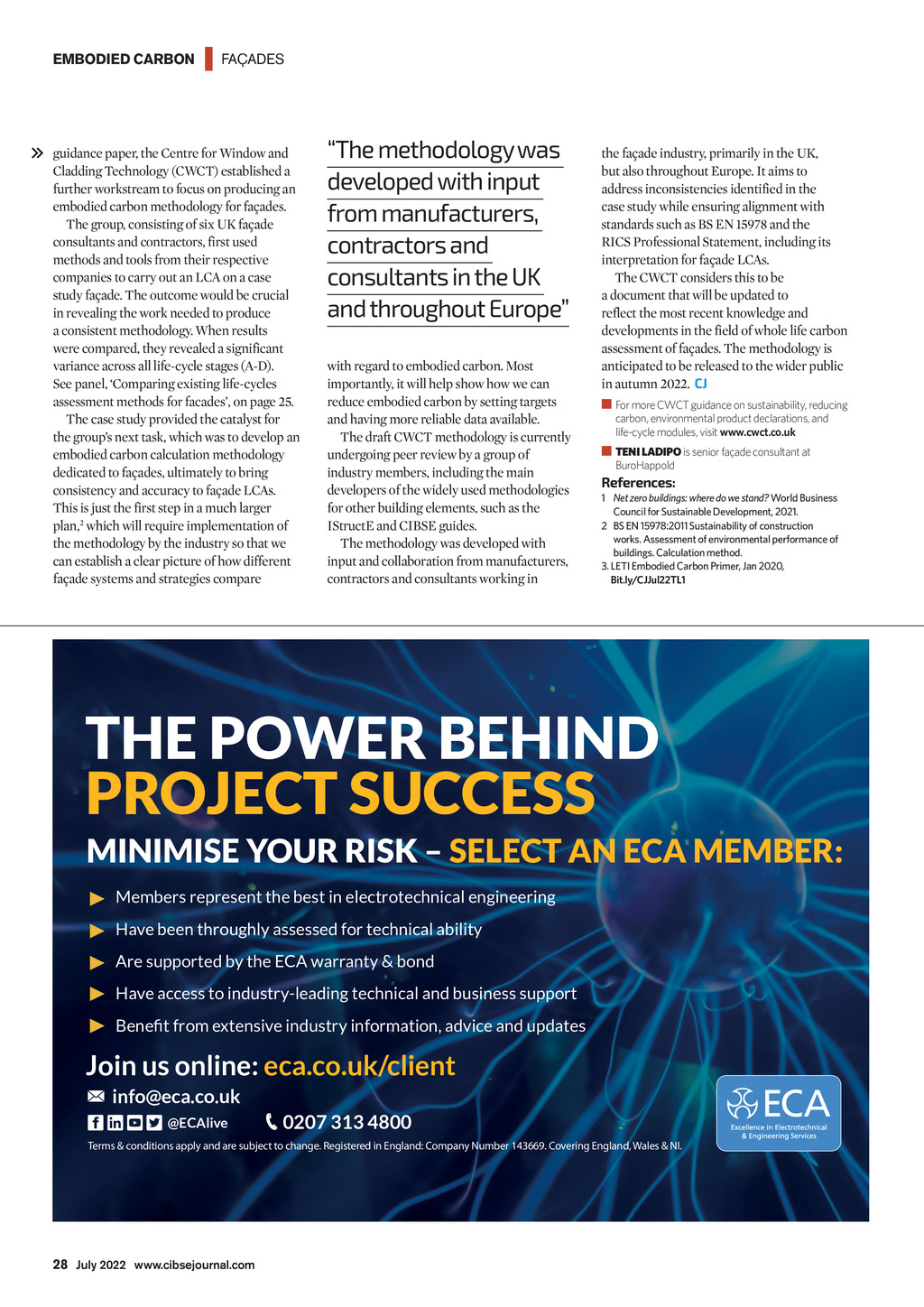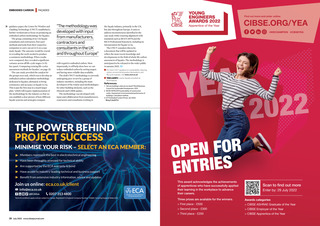




EMBODIED CARBON | FAADES guidance paper, the Centre for Window and Cladding Technology (CWCT) established a further workstream to focus on producing an embodied carbon methodology for faades. The group, consisting of six UK faade consultants and contractors, first used methods and tools from their respective companies to carry out an LCA on a case study faade. The outcome would be crucial in revealing the work needed to produce a consistent methodology. When results were compared, they revealed a significant variance across all life-cycle stages (A-D). See panel, Comparing existing life-cycles assessment methods for facades, on page 25. The case study provided the catalyst for the groups next task, which was to develop an embodied carbon calculation methodology dedicated to faades, ultimately to bring consistency and accuracy to faade LCAs. This is just the first step in a much larger plan,2 which will require implementation of the methodology by the industry so that we can establish a clear picture of how different faade systems and strategies compare The methodology was developed with input from manufacturers, contractors and consultants in the UK and throughout Europe with regard to embodied carbon. Most importantly, it will help show how we can reduce embodied carbon by setting targets and having more reliable data available. The draft CWCT methodology is currently undergoing peer review by a group of industry members, including the main developers of the widely used methodologies for other building elements, such as the IStructE and CIBSE guides. The methodology was developed with input and collaboration from manufacturers, contractors and consultants working in the faade industry, primarily in the UK, but also throughout Europe. It aims to address inconsistencies identified in the case study while ensuring alignment with standards such as BS EN 15978 and the RICS Professional Statement, including its interpretation for faade LCAs. The CWCT considers this to be a document that will be updated to reflect the most recent knowledge and developments in the field of whole life carbon assessment of faades. The methodology is anticipated to be released to the wider public in autumn 2022. CJ For more CWCT guidance on sustainability, reducing carbon, environmental product declarations, and life-cycle modules, visit www.cwct.co.uk TENI LADIPO is senior faade consultant at BuroHappold References: 1 Net zero buildings: where do we stand? World Business Council for Sustainable Development, 2021. 2 BS EN 15978:2011 Sustainability of construction works. Assessment of environmental performance of buildings. Calculation method. 3. LETI Embodied Carbon Primer, Jan 2020, Bit.ly/CJJul22TL1 THE POWER BEHIND PROJECT SUCCESS MINIMISE YOUR RISK SELECT AN ECA MEMBER: Members represent the best in electrotechnical engineering Have been throughly assessed for technical ability Are supported by the ECA warranty & bond Have access to industry-leading technical and business support Benet from extensive industry information, advice and updates Join us online: eca.co.uk/client info@eca.co.uk @ECAlive 0207 313 4800 Terms & conditions apply and are subject to change. Registered in England: Company Number 143669. Covering England, Wales & NI. 28 July 2022 www.cibsejournal.com CIBSE July 22 pp26-28 Embodied energy facades.indd 28 24/06/2022 15:19